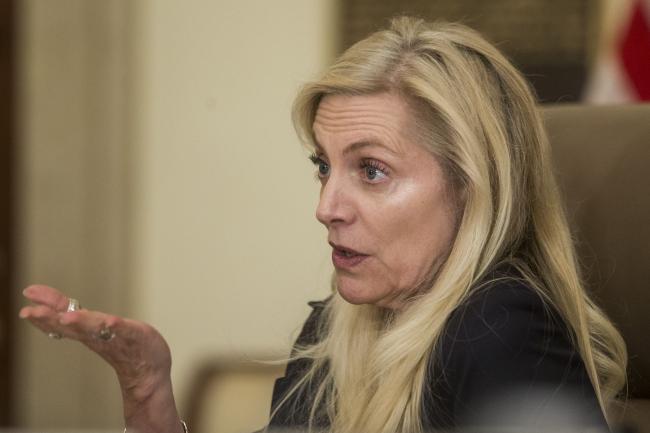(Bloomberg) -- Federal Reserve Governor Lael Brainard described a broad regulatory reform agenda for the coming months aimed at fixing a financial system that proved too fragile to stand up to the pandemic shock and required unprecedented assistance from taxpayer-backed emergency facilities.
“Regulators and international standard-setting bodies have an opportunity to draw important lessons from the COVID shock about where fragilities remain,” Brainard said Monday in prepared remarks to the Institute of International Bankers. “A number of common-sense reforms are needed to address the unresolved structural vulnerabilities in non-bank financial intermediation and short-term funding markets.”Brainard chairs the Fed Board committee on financial stability and oversees a division dedicated to that effort. The Fed had to backstop money market mutual funds, the corporate bond market, and provide large amounts of liquidity to the U.S. bond dealers to keep the financial system stable when the pandemic washed over markets a year ago. She also sits on a committee that oversees bank supervision and regulation that is chaired by Randal Quarles, Fed vice chair for supervision, with whom she has disagreed with in the past.
Treasuries, Money Market Funds
Brainard listed some key markets as targets for regulatory review, including Treasuries and money market funds.
For the second time in 12 years, a run on money market funds “triggered the need for policy intervention to mitigate the effect on financial conditions and the wider economy,” Brainard said. “If properly calibrated, capital buffers or reforms that address the first-mover advantage to investors that redeem early, such as swing pricing or a minimum balance at risk, could significantly reduce the run risk associated with money funds.”
The Fed governor said the financial stress of the pandemic also highlighted liquidity risks in bond mutual funds and the U.S. Treasury market.
“Some have suggested that the Federal Reserve could provide standing facilities to backstop repos in stress conditions, possibly creating a domestic standing facility or converting the temporary Foreign and International Monetary Authorities (FIMA) Repo Facility to a standing facility,” Brainard said, adding that central clearing for Treasury cash markets is also worth reviewing.
Merit ‘Analysis’
“These measures involve complex tradeoffs and merit thoughtful analysis in advancing the important goal of ensuring Treasury market resilience,” she said.
On bank rules which the Fed directly influences, Brainard said the lesson of the pandemic market crisis is that the Dodd-Frank Act reforms served the banking system well and that “it is very important to guard against erosion” of those safeguards.
Fed officials are watching to see if their aggressive monetary policy is fueling asset bubbles and at their January meeting highlighted low risk spreads on corporate bonds and loans, even though corporate debt loads had increased during the pandemic. A few participants noted that some commercial real estate sectors faced the prospect of falling prices and increased stress as a result of social distancing and a reduction of travel, minutes of the meeting showed.
“We should not miss the opportunity to distill lessons from the COVID shock and institute reforms so our system is more resilient and better able to withstand a variety of possible shocks in the future, including those emanating from outside the financial system,” Brainard said.
(Updates with Brainard comment on bank capital rules)
©2021 Bloomberg L.P.

